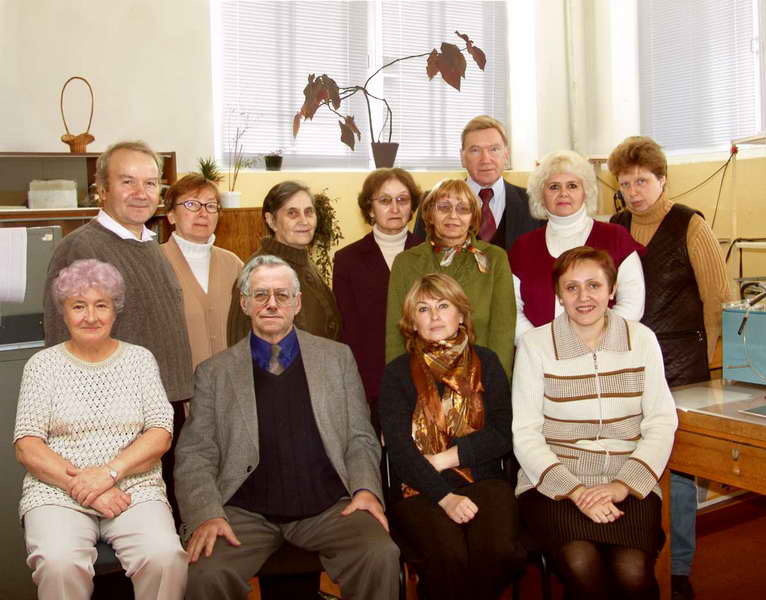The Laboratory was founded in 1960 by Prof. G. P. Konradi. By his initiative, a complex study started of mechanisms of formation of vascular tone and elucidation of its role in local and systemic circulation reactions. In 1972, the Laboratory was headed by Medical Sciences Doctor V. V. Orlov. A particular attention was paid to participation of spinal and cortical mechanisms in regulation of circulation.
Since 1985 until 2014, the Laboratory was headed by Prof. D. P. Dvoretsky (since 2003, Corresponding Member of the Russian Academy of Sciences). The investigations were focused on studying role of factors determining reactivity of blood vessels in the process of realization of such local vasomotor reactions as the working and reactive hyperemia and endothelium-dependent vasodilatation in organs and tissues during changes of transmural pressure in their blood vessels. Interrelations of the heart pump function and peripheral blood vessel tone are analyzed in the course of systemic circulation reactions.

The methodical approaches used at the Laboratory include extracorporal tissue perfusion, supravital televisional microscopy of the terminal vascular bed, measurements of systemic and regional vascular resistance, capillary hydrostatic pressure, transcapillary fluid exchange, cardiac output. Computer on-line processing of hemodynamics parameters is used. Further developed is mathematical modeling of the blood motion in blood vessels and of their contractile activity.
The main results of the Laboratory work in the 1990s were:
establishment of the role of the dynamic component in realization of mechanogenic influences on blood vessels, elucidation of significance of the endothelium secretory function in the appearance of vasodilatatory responses to a rhythmical vascular wall distention by the pulse blood pressure, evaluation of vasoreactivity depending on the prestimulus vascular tone, determination of peculiarities of vessels belonging to different organs in the arterial hypertension. A dependence of compensatory vascular reactions on the body position in space is revealed (in cooperation with Institute of Medical-Biological Problems of the Russian Academy of Sciences); reactivity of the vascular system to physical stimuli under conditions of the replacement of the natural by the artificial heart is established (in cooperation with Institute of Transplantology and Artificial Organs of the Russian Federation Ministry of Health and Social Development).
For the last few years, father developed are studies on the role of the initial tone of vascular myocytes in formation of vascular reaction. Specifically, this includes effect of pH of perfusate as well as of static or dynamic stretch of blood vessels on their reactivity initiated by stimulation of sympathetic nerves. Dependence of the vascular myocyte contractile function on stretching modulations as well as on the vascular wall circumferential and radial tension is studied. At the systemic level the role is revealed of the initial (spontaneous and controlled) blood pressure level for formation of systemic constriction and dilatation reactions as well as participation of the NO-dependent mechanism in formation of systemic hemodynamics reaction to an increase of the blood volume and an orthostatic action in rats. The obtained data broaden essentially the current concept of coupling of the character and value of vascular reactions with the prestimulus level of vascular tone and the degree of their mechanical stretching. Of great importance is study of different adrenoreactivity of pial arteries of various diameters in normo- and hypertensive rats, which is essential for the problem of pathogenesis of hypertensive states. Mathematical modeling of a fluid flow in a vessel has allowed revealing a predominant effect on the blood flow of the myogenic reaction (by the Bayliss type) as compared with the endothelium-dependent reaction connected with a change of tension of a shift at the internal vessel wall. There started a study of action of the low-intensity laser irradiation in the close and far infrared diapason on microcirculation and contractile activity of vascular smooth muscles.
The Laboratory actively cooperates with Institute of Medical-Biological Problems of the Russian Academy of Sciences, Institute of Mechanics of M.V. Lomonosov Moscow State University, and A. F. Ioffe Physical-Technical Institute of the Russian Academy of Sciences. |